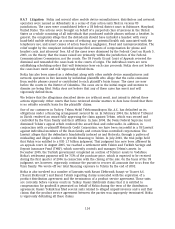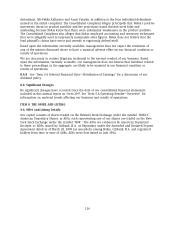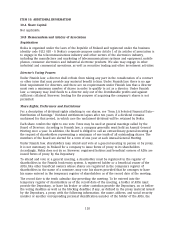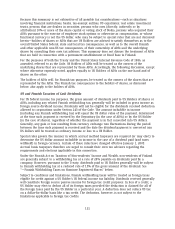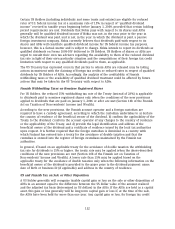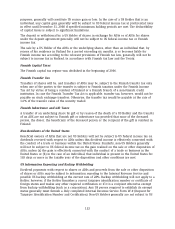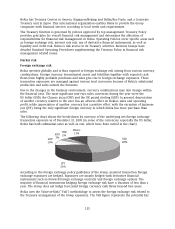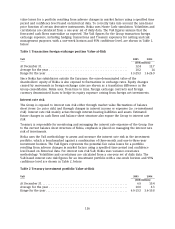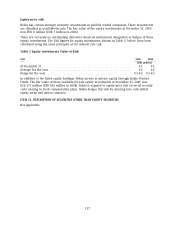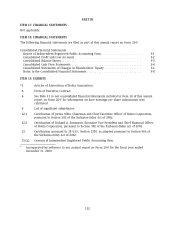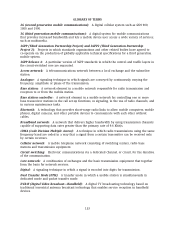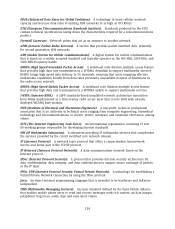Nokia 2005 Annual Report Download - page 126
Download and view the complete annual report
Please find page 126 of the 2005 Nokia annual report below. You can navigate through the pages in the report by either clicking on the pages listed below, or by using the keyword search tool below to find specific information within the annual report.information reporting or backup withholding. However, such Holders may be required to provide
certification of non-US status (generally on IRS Form W-8BEN) in connection with payments
received in the United States or through certain US-related financial intermediaries. Backup
withholding is not an additional tax. Amounts withheld as backup withholding may be credited
against a Holder’s US federal income tax liability, and the Holder may obtain a refund of any
excess amounts withheld under the backup withholding rules by filing the appropriate claim for
refund with the Internal Revenue Service and furnishing any required information.
10.F Dividends and Paying Agents
Not applicable.
10.G Statement by Experts
Not applicable.
10.H Documents on Display
The documents referred to in this report can be read at the Securities and Exchange Commission’s
public reference facilities at 100 F Street, N.E., Room 1580, Washington, D.C. 20549.
10.I Subsidiary Information
Not applicable.
ITEM 11. QUANTITATIVE AND QUALITATIVE DISCLOSURES ABOUT MARKET RISK
General risk management principles
Nokia’s overall risk management concept is based on visibility of the key risks preventing Nokia
from reaching its business objectives. This covers all risk areas: strategic, operational, financial and
hazard risks. Risk management at Nokia is a systematic and pro-active way to analyze, review
and manage all opportunities, threats and risks related to Nokia´s objectives rather than to solely
eliminate risks.
The principles documented in Nokia´s Risk Policy and accepted by the Audit Committee of the
Board of Directors require risk management and its elements to be integrated into business
processes. One of the main principles is that the business or function owner is also the risk owner,
however, it is everyone’s responsibility at Nokia to identify risks preventing us from reaching our
objectives.
Key risks are reported to the business and Group level management to create assurance on
business risks and to enable prioritization of risk management implementation at Nokia. In
addition to general principles there are specific risk management policies covering, for example,
treasury and customer finance risks.
Financial risks
The key financial targets for Nokia are growth, profitability, operational efficiency and a strong
balance sheet. The objective for the Treasury function is twofold: to guarantee cost-efficient
funding for the Group at all times, and to identify, evaluate and hedge financial risks in close
co-operation with the business groups. There is a strong focus in Nokia on creating shareholder
value. The Treasury function supports this aim by minimizing the adverse effects caused by
fluctuations in the financial markets on the profitability of the underlying businesses and by
managing the balance sheet structure of the Group.
124


